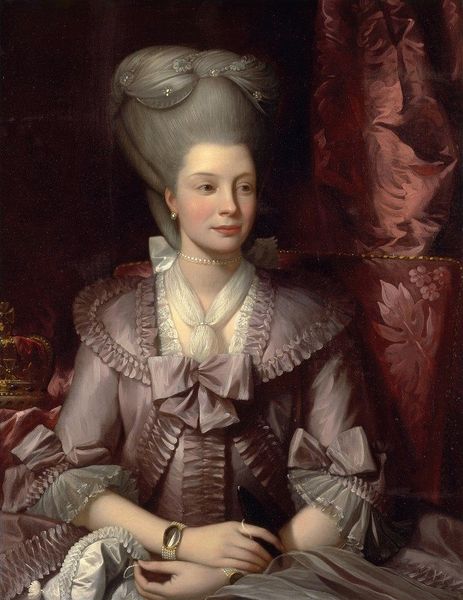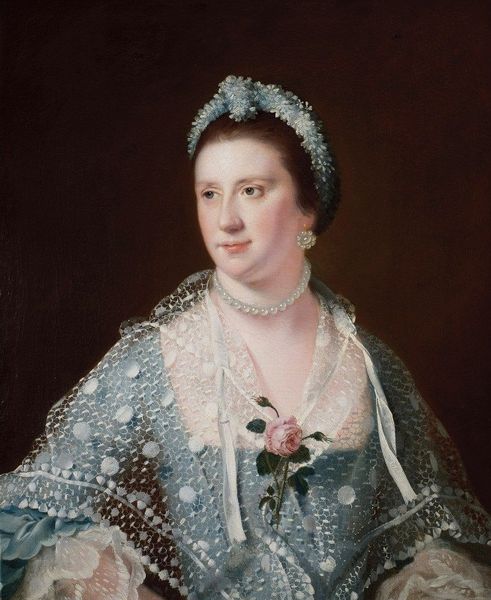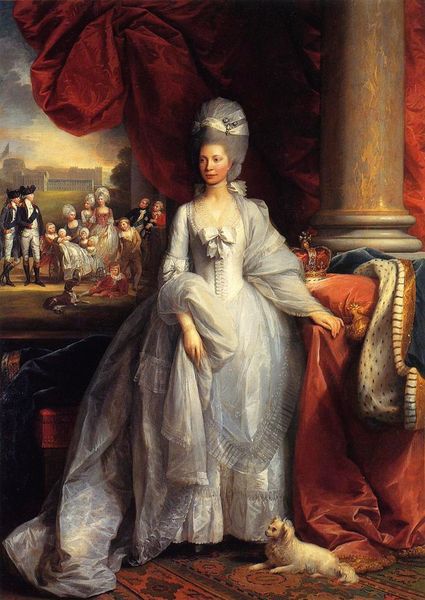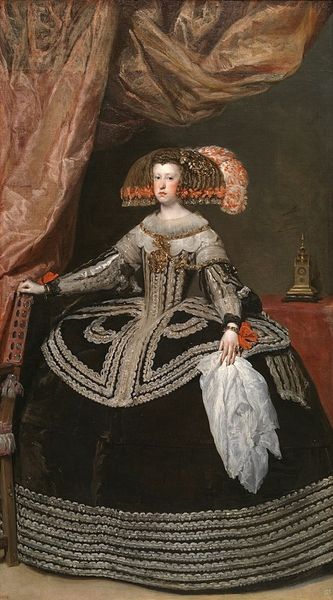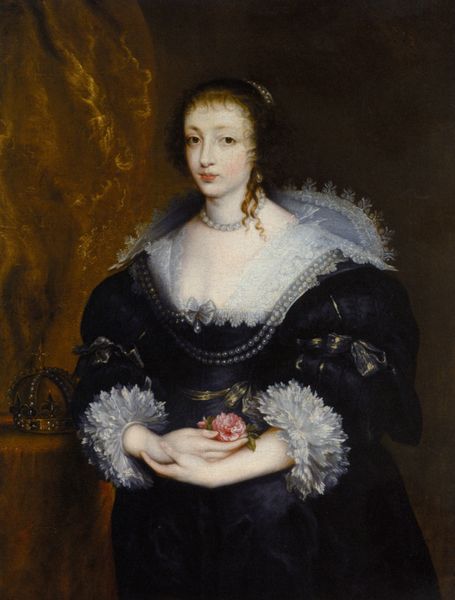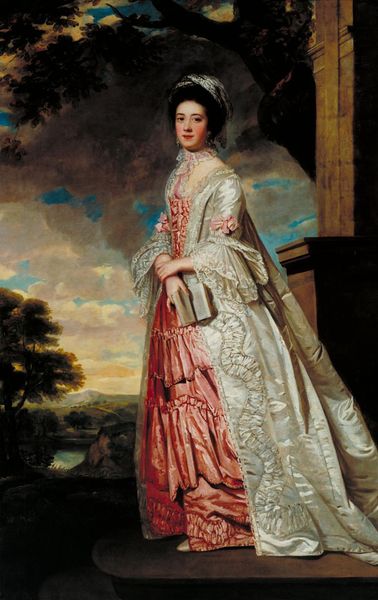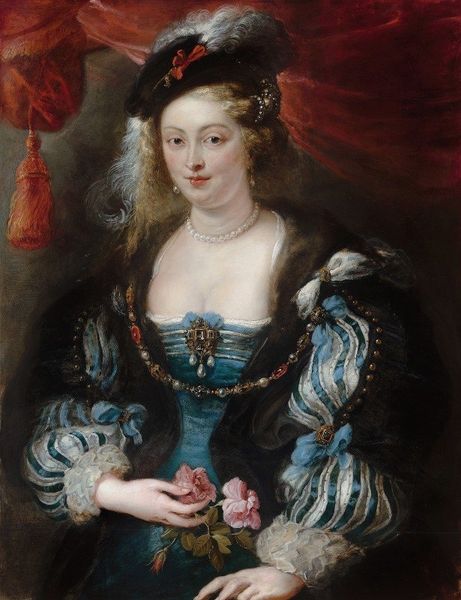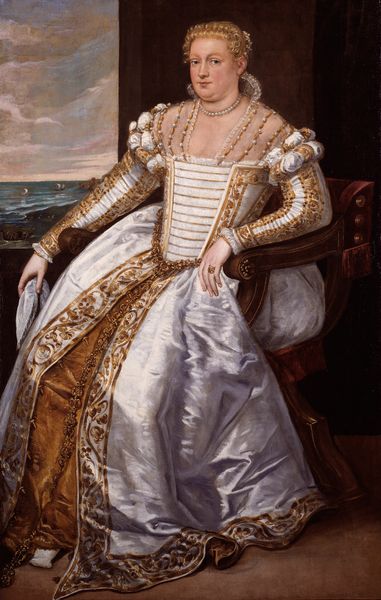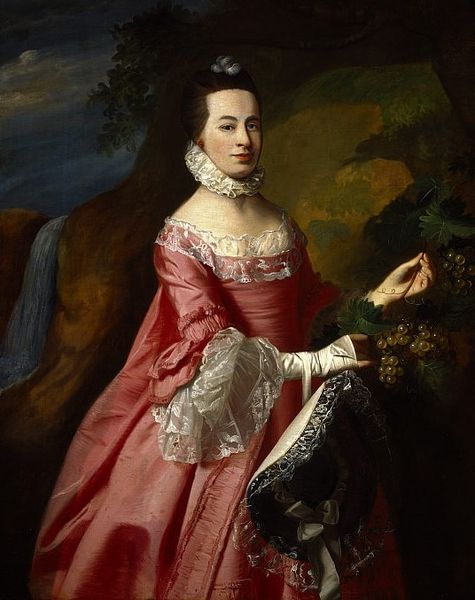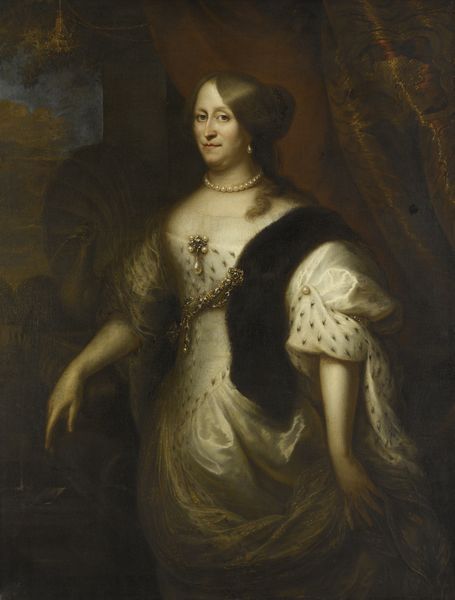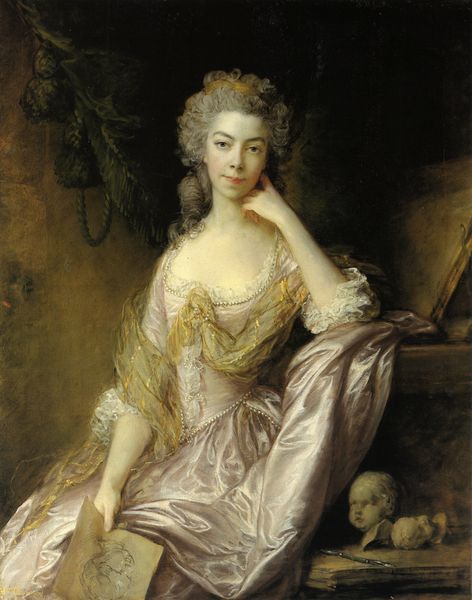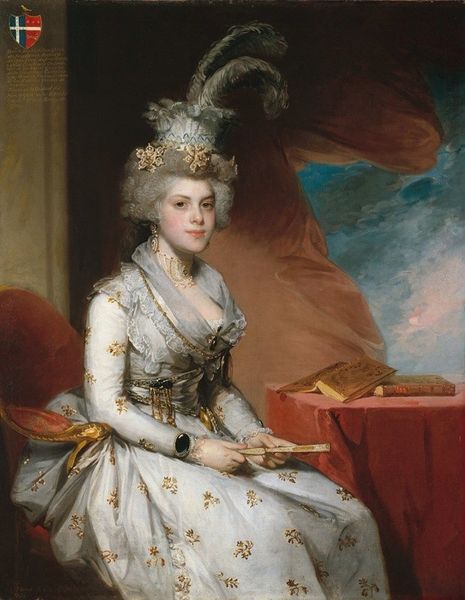
Copyright: Public Domain: Artvee
Editor: Here we have Benjamin West's oil painting, "Portrait of Queen Charlotte," from around 1776. The silvery dress dominates – it's hard to ignore. What's your take on this regal representation? Curator: This portrait invites us to consider the complexities of Queen Charlotte's role during a pivotal period in history. Beyond the Rococo extravagance, exemplified by the gown and elaborate hairstyle, we should reflect upon the uncomfortable tensions present during the height of the British Empire and its reliance on slavery and colonial exploitation. Editor: So you’re saying the luxury on display has a dark side? Curator: Absolutely. This was painted during a time of great social upheaval, of calls for abolition that Queen Charlotte privately supported. To see her portrayed here in such obvious wealth forces a critical examination of the socio-political context of the era. Does this painting function to normalize and celebrate power at the expense of the labor of others? Editor: It's almost like the dress itself becomes a symbol of that exploitation. Curator: Precisely! Consider the cost of that fabric, the artistry, and then ask: who is excluded from this picture? West subtly presents a narrative about power, taste and class. How are we complicit in perpetuating these power structures when we celebrate artwork like this uncritically? Editor: I didn't consider that before. It's more than just a pretty portrait; it's a mirror reflecting uncomfortable truths about the society it was made in. Curator: Exactly, art serves as a crucial lens through which we interrogate history and reimagine a future where power is equitably distributed.
Comments
No comments
Be the first to comment and join the conversation on the ultimate creative platform.
